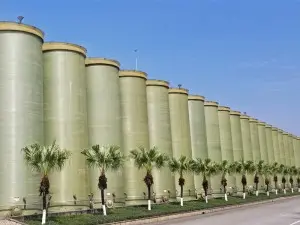
-
 Afrikaans
Afrikaans -
 Albanian
Albanian -
 Amharic
Amharic -
 Arabic
Arabic -
 Armenian
Armenian -
 Azerbaijani
Azerbaijani -
 Basque
Basque -
 Belarusian
Belarusian -
 Bengali
Bengali -
 Bosnian
Bosnian -
 Bulgarian
Bulgarian -
 Catalan
Catalan -
 Cebuano
Cebuano -
 China
China -
 China (Taiwan)
China (Taiwan) -
 Corsican
Corsican -
 Croatian
Croatian -
 Czech
Czech -
 Danish
Danish -
 Dutch
Dutch -
 English
English -
 Esperanto
Esperanto -
 Estonian
Estonian -
 Finnish
Finnish -
 French
French -
 Frisian
Frisian -
 Galician
Galician -
 Georgian
Georgian -
 German
German -
 Greek
Greek -
 Gujarati
Gujarati -
 Haitian Creole
Haitian Creole -
 hausa
hausa -
 hawaiian
hawaiian -
 Hebrew
Hebrew -
 Hindi
Hindi -
 Miao
Miao -
 Hungarian
Hungarian -
 Icelandic
Icelandic -
 igbo
igbo -
 Indonesian
Indonesian -
 irish
irish -
 Italian
Italian -
 Japanese
Japanese -
 Javanese
Javanese -
 Kannada
Kannada -
 kazakh
kazakh -
 Khmer
Khmer -
 Rwandese
Rwandese -
 Korean
Korean -
 Kurdish
Kurdish -
 Kyrgyz
Kyrgyz -
 Lao
Lao -
 Latin
Latin -
 Latvian
Latvian -
 Lithuanian
Lithuanian -
 Luxembourgish
Luxembourgish -
 Macedonian
Macedonian -
 Malgashi
Malgashi -
 Malay
Malay -
 Malayalam
Malayalam -
 Maltese
Maltese -
 Maori
Maori -
 Marathi
Marathi -
 Mongolian
Mongolian -
 Myanmar
Myanmar -
 Nepali
Nepali -
 Norwegian
Norwegian -
 Norwegian
Norwegian -
 Occitan
Occitan -
 Pashto
Pashto -
 Persian
Persian -
 Polish
Polish -
 Portuguese
Portuguese -
 Punjabi
Punjabi -
 Romanian
Romanian -
 Russian
Russian -
 Samoan
Samoan -
 Scottish Gaelic
Scottish Gaelic -
 Serbian
Serbian -
 Sesotho
Sesotho -
 Shona
Shona -
 Sindhi
Sindhi -
 Sinhala
Sinhala -
 Slovak
Slovak -
 Slovenian
Slovenian -
 Somali
Somali -
 Spanish
Spanish -
 Sundanese
Sundanese -
 Swahili
Swahili -
 Swedish
Swedish -
 Tagalog
Tagalog -
 Tajik
Tajik -
 Tamil
Tamil -
 Tatar
Tatar -
 Telugu
Telugu -
 Thai
Thai -
 Turkish
Turkish -
 Turkmen
Turkmen -
 Ukrainian
Ukrainian -
 Urdu
Urdu -
 Uighur
Uighur -
 Uzbek
Uzbek -
 Vietnamese
Vietnamese -
 Welsh
Welsh -
 Bantu
Bantu -
 Yiddish
Yiddish -
 Yoruba
Yoruba -
 Zulu
Zulu
grp chimney
Understanding GRP Chimneys Benefits, Applications, and Installation
In the realm of construction and engineering, the search for durable, cost-effective, and lightweight materials has led to the rise of Glass-Reinforced Plastic (GRP) chimneys. GRP chimneys are increasingly becoming a preferred choice for both new constructions and refurbishments due to their numerous advantages over traditional materials such as brick or stainless steel. This article delves into what GRP chimneys are, their benefits, applications, and installation concerns.
What is GRP?
Glass-Reinforced Plastic, also known as fiberglass, is a composite material made from a polymer matrix reinforced with glass fibers. The resulting material possesses exceptional strength-to-weight ratios, corrosion resistance, and durability. When applied to chimneys, GRP enhances the overall performance and longevity of the structure, making it an ideal material in many applications.
Benefits of GRP Chimneys
1. Lightweight Construction One of the most significant advantages of GRP chimneys is their lightweight nature. This characteristic simplifies transportation and installation, reducing labor costs and time. Unlike traditional materials, which can be prohibitively heavy, GRP allows for easier handling and installation on-site.
2. Corrosion Resistance GRP is inherently resistant to corrosion, which is a critical factor in chimney applications where exposure to harsh environments, chemicals, and pollutants is common. This resistance prolongs the lifespan of the chimney, making it a reliable investment for building owners.
3. Thermal Insulation GRP chimneys often come with excellent thermal insulation properties. This insulation helps in controlling temperature fluctuations, which in turn can lead to improved energy efficiency for buildings. Maintaining consistent temperatures within the chimney also aids in preventing condensation and associated problems.
4. Design Flexibility The manufacturing process of GRP allows for high flexibility in design. Chimneys can be customized to fit specific aesthetic requirements and structural challenges, ensuring that they blend seamlessly with the architecture of a building.
5. Ease of Maintenance Unlike traditional chimney materials that may require frequent inspections and repairs, GRP chimneys are low-maintenance. Their resistance to flaking, rust, and deterioration simplifies upkeep and extends service life.
grp chimney

Applications of GRP Chimneys
GRP chimneys are versatile and find usage in various sectors, including
- Commercial Buildings Used in shopping malls, office blocks, and industrial facilities where chimneys accommodate exhaust systems for heating or ventilation.
- Residential Properties Increasingly popular in suburban homes, especially those using modern heating systems that require efficient venting solutions.
- Power Generation Employed in power plants for emissions control and efficient airflow management, ensuring compliance with environmental regulations.
- Marine Applications Utilized in yachts and ships where weight and resistance to marine corrosion are critical factors.
Installation of GRP Chimneys
The installation of GRP chimneys typically involves several crucial steps to ensure safety and efficiency. First, a thorough site analysis is conducted to determine the optimal configuration and positioning. Next, the chimney components are typically prefabricated in a factory, allowing for a swift on-site assembly. It is important to follow manufacturer guidelines and local building codes during installation to ensure compliance and safety.
In conclusion, GRP chimneys represent a significant advancement in chimney technology, offering numerous benefits for a wide array of applications. Their lightweight, corrosion-resistant, and thermally efficient properties make them a smart choice for modern buildings. As the construction industry continues to evolve, the adoption of GRP materials will likely increase, paving the way for more innovative, sustainable building practices. Embracing such technologies not only benefits the builders but also the environment, aligning with the global push for more sustainable construction solutions.
Latest news
-
Exploring the Benefits of Top Hammer Drifter Rods for Enhanced Drilling PerformanceNewsJun.10,2025
-
High-Precision Fiberglass Winding Machine for GRP/FRP Pipe Production – Reliable & Efficient SolutionsNewsJun.10,2025
-
FRP Pipes & Fittings for Shipbuilding - Corrosion-Resistant & LightweightNewsJun.09,2025
-
Premium FRP Flooring Solutions Durable & Slip-ResistantNewsJun.09,2025
-
Premium Fiberglass Rectangular Tanks Durable & Lightweight SolutionNewsJun.09,2025
-
Tapered Drill String Design Guide Durable Performance & UsesNewsJun.09,2025









